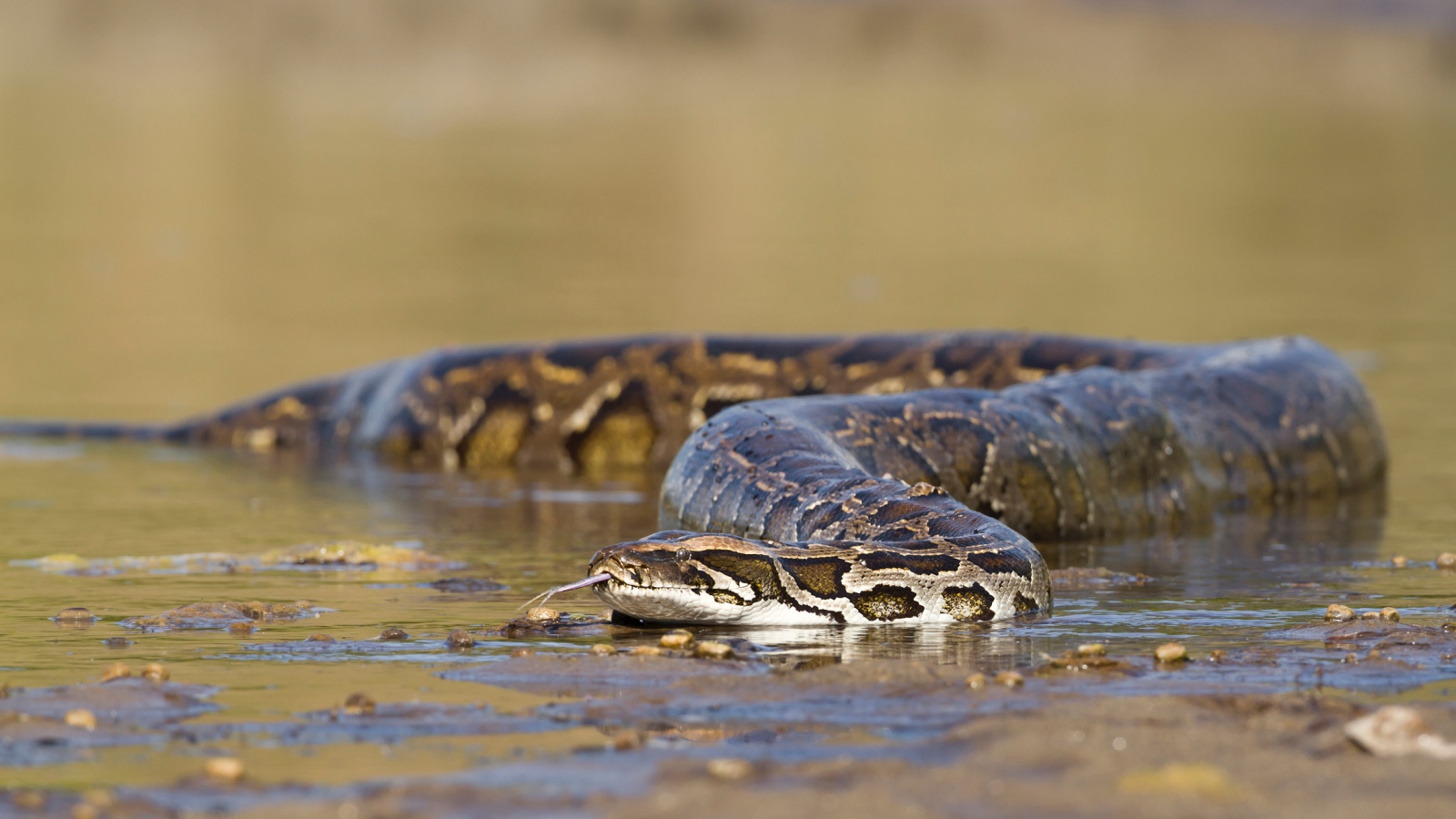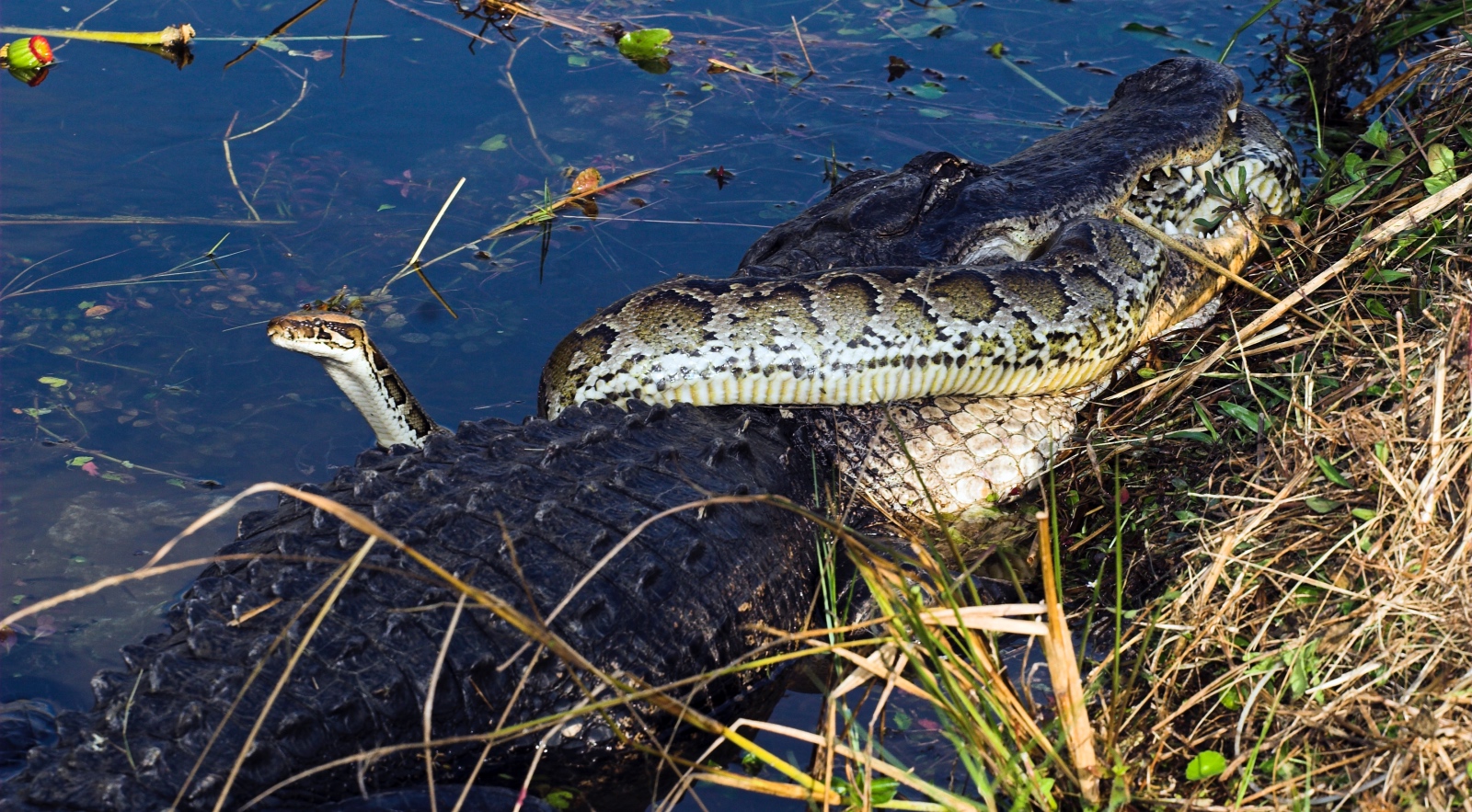
iStockphoto / Utopia_88
Once again, surreal footage has been captured in the Everglades National Park in Florida showing a large alligator attempting to eat and swallow a huge Burmese python.
Burmese pythons are an invasive snake species in the Sunshine State with population numbers that have been exploding year over year as they are perfectly camouflaged to the terrain and adapted to the land. These invasive snakes also face very little predation in the Everglades once they grow large enough to not be eaten by common birds. Some of these Burmese pythons are reaching 16, 17, and 18-feet in length and at that point the only species with the stones to try and eat them are alligators.
One of these eat-or-be-eaten encounters was captured last week by wildlife photographer Alison Joslyn who was near Shark Valley in the Everglades National Park. The clip has since gone viral but it does feature an alligator eating a snake so if that is too much for you watch then take our word for it.
From the clip, it’s impossible to tell how long the snake was but the alligator is estimated at 11 feet. Which leads me to believe that is a pretty sizable python.
A Very Busy Year For Burmese Python Activity In Florida
This year has seen several records fall when it comes to invasive Burmese pythons in Florida. In July, a 19ft python became the longest specimen ever caught in the Florida Everglades. Just a week before that, the Python Cowboy captured another big snake with 60 eggs in its belly.
There does seem to be seasonality to ‘alligator eating Burmese python’ stories. 13 months ago, a 5ft alligator was found inside the belly of an 18ft python. It happened again in March of this year.
The environmental factors leading to increased sightings in the Winter and Spring are numerous. But it is worth considering the slight dips in temperatures during those months here in Florida and how cold-blooded reptiles seek out warmth to regulate their body temperatures. And in doing so, they are often more visible than in warmer months when they can comfortably hide out in dense brush.
There are always going to be environmental influences at play when there’s a spike in python sightings. But it’s also important to remember that correlation does not equal causation.
Other factors to consider are growing population numbers, deforestation/habitat loss as Florida is in its third ‘great’ real estate boom of the past 100 years (or so I believe), and many other factors that might not seem obvious like bird migrations leading to more abundant prey for the Burmese pythons this time of year.
